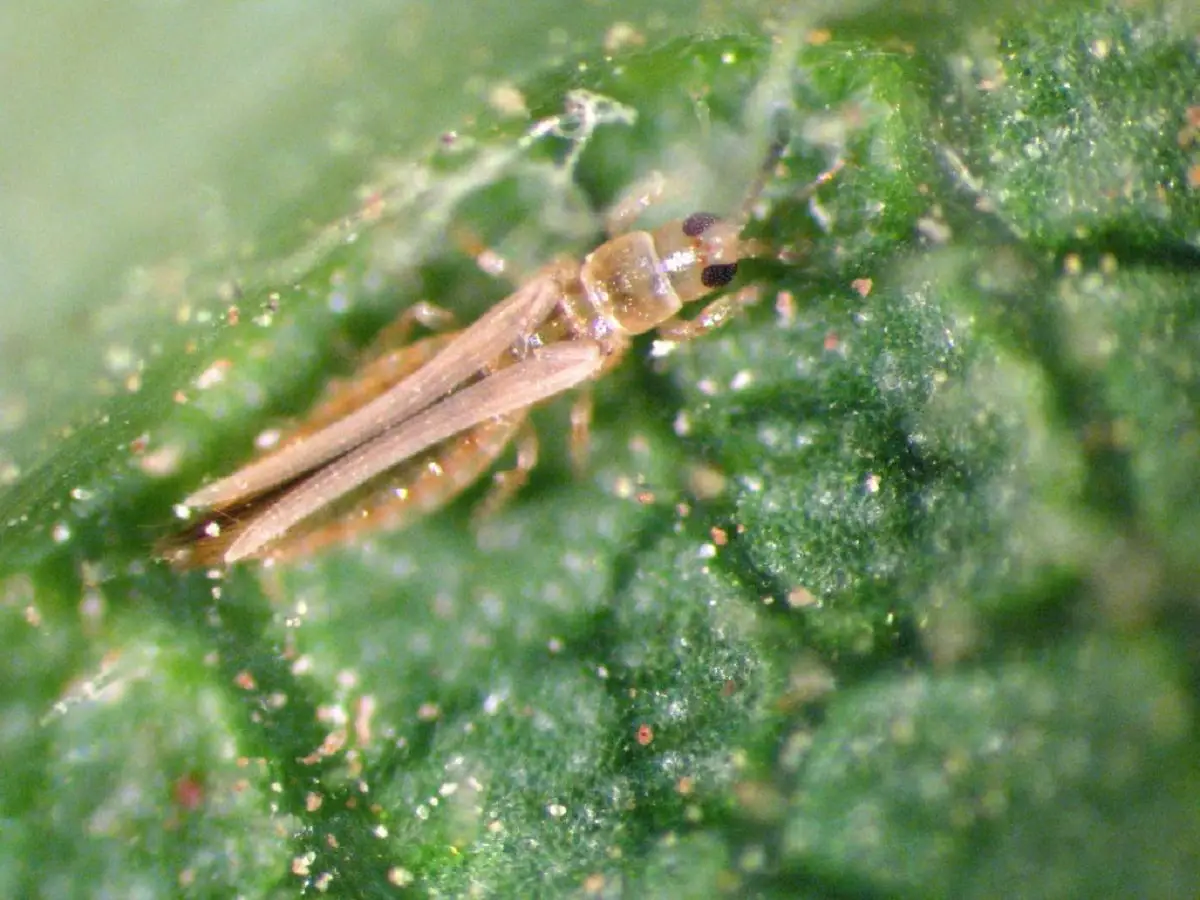

The trips. Those tiny insects capable of doing a lot of damage to plants, especially during the hottest months. They are no larger than half a centimeter, but if not fought in time, the consequences could be devastating. Therefore, we are going to tell you what exactly they are, the symptoms that our plants will present and above all, how they are fought and the products that you will need to end them once and for all.
Say goodbye to these unpleasant tenants forever, and enjoy a healthy garden and / or patio because in this article we are going to tell you all the characteristics, life cycle and how to eliminate thrips.
What are trips?


These insects, which They are like earwigs but in miniature version, they measure about 2mm. They can be seen with the naked eye, sometimes as if they were a small more or less rounded black spot. The most common species is the Frankliniella occidentalis, which is native to North America but today you can find it in Europe, Australia and South America.
Key features
When we have a plague of thrips in our crops, some common characteristics are established that will indicate what dangers we are going to face. It’s about insects very common both outdoors and in greenhouses and less in indoor crops. What we must bear in mind with these insects is that, once they have appeared, they are capable of reproducing with great ease and speed. The time of year where it appears most frequently is between spring and summer.
The way to reproduce is so fast as it does so sexually or by parthenogenesis. Parthenogenesis is a type of reproduction where individuals have the ability to reproduce as one without the need for the male sex cell. This means that if a female is not seconded by the male, she can only produce other females by parthenogenesis. However, if sexual reproduction occurs, there can be males and females.
A female triplet can lay between 30 and 300 eggs depending on each species and some environmental conditions such as temperature and humidity. If we manage to maintain a lower humidity we can prevent them from laying a greater number of eggs. It is interesting to maintain good ventilation and moisture extraction at all times to prevent the eggs from being viable.
Life cycle of thrips


These insects usually start when they appear in spring. The temperature in which they develop has to be in a range between 15 and 36 degrees. In indoor crops it is less frequent that it appears but they also do it in a stable temperature of between 20 and 25 degrees. You have to be attentive to the whole year, since they can be easily reproduced once they have appeared in the crops.
Thrips have several vital phases that usually last in total about 90 days approximately. The egg stage lasts between 3-5 days, two larval stages that last approximately 8 days, the pupa composed of pre-nymph and nymph that lasts between 4-5 days and, finally, the adult phase that lasts between 20-75 days.
Let’s see what the phases are one by one:
- Egg phase: eggs are laid by adult females and are yellowish in color. Its size is tiny and has a shape similar to that of a human kidney. The females insert the eggs into the plant tissue of the plants.
- Larva stage: The larval stage of these thrips begins with a pearl gray color and, as it develops, they acquire an ocher color. In this state, the trip actively feeds and bites the leaves of the plants in which they are housed.
- Pupal stage: This is when the substrate is moved and goes through various states. While it is in the substrate, it does not feed and completes this state in about 4-5 days.
- Adult phase: here they return to the culture to feed and reproduce imposing new eggs. The male can last between 30-50 days while the females last between 40-75 days.
Both larvae and adults stick their beaks into leaves and / or flowers to feedleaving stains.
Symptoms on plants
The symptoms that the plants that are being attacked by these insects will present are:
- Curled or deformed leaves.
- Presence of black dots on the underside of the leaves. These black spots are the feces of the thrips, which they leave as they feed.
- Flowers that do not open, or that do not finish opening.
- Deformation of the fruits.
- Fall of leaves and petals.
Do your plants fulfill those symptoms? Well then they are affected by this plague and it will be your turn to end them. The most effective method is blue color traps that now you can get at the best price and with all the guarantees by clicking here.
How to combat thrips?


Fighting them is a task that can take time. The ideal is always to prevent, keeping the plants in a cool place, with high humidity. Therefore, it is advisable to place some glasses with water around it, and water whenever necessary.
Even so, sometimes due to many precautions that are taken, they appear. What to do in these cases?
- Treat your plants with pyrethrin, which is a natural product that will help prevent the pest from growing.
- You can also use a chemical insecticide whose active ingredient is formethanate or malathion.
- Place blue sticky traps at the height of the plant. If you want our recommendation and end them forever -> Buy your blue sticky trap here.
And to be patient. Little by little you will win this battle, for sure.
